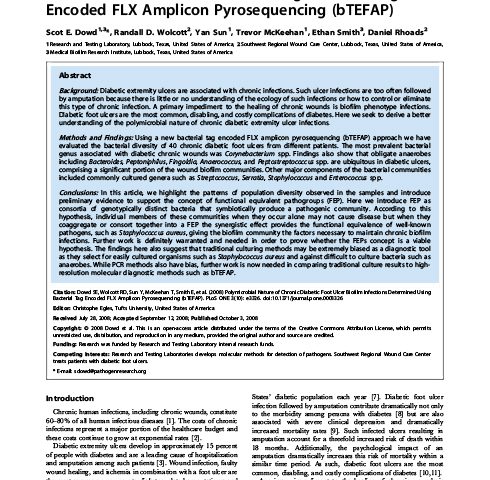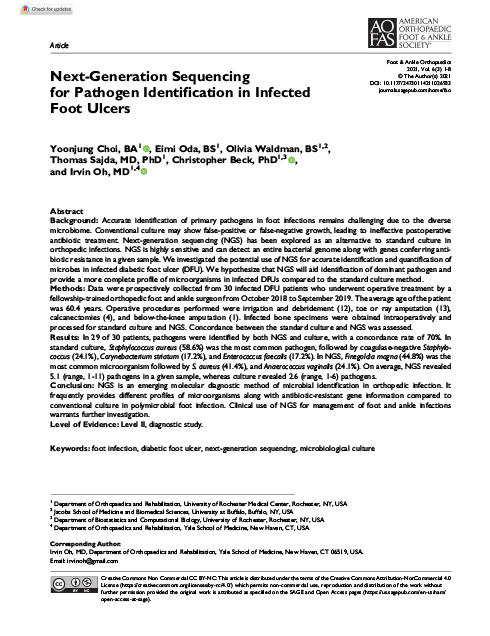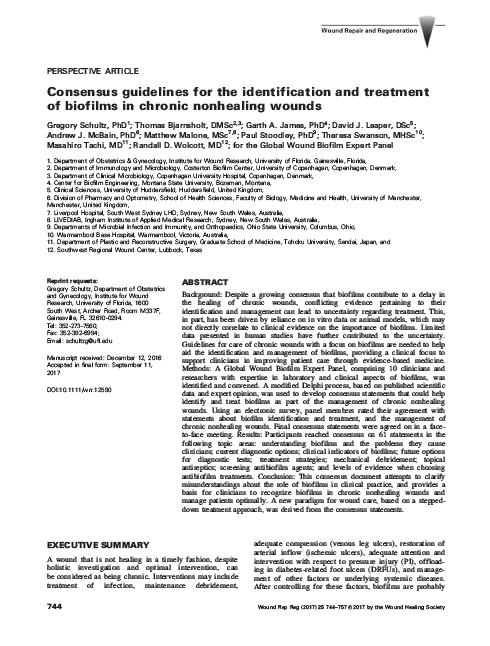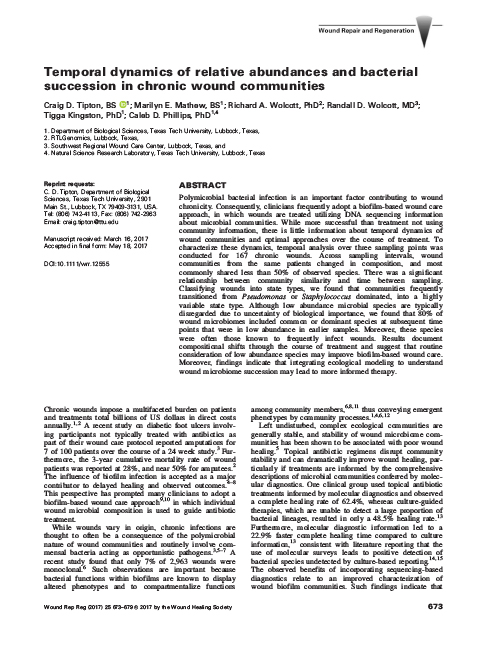PLoS One. 2008;3(10):e3326.
Research Article: A new bacterial tag encoded FLX amplicon pyrosequencing (bTEFAP) approach was used to investigate the polymicrobial nature of chronic diabetic extremity ulcer infections in 40 patients. The most prevalent bacterial genus associated with diabetic chronic wounds was Corynebacterium spp. Also ubiquitous were obligate anaerobes including Bacteroides, Peptoniphilus, Fingoldia, Anaerococcus, and Peptostreptococcus spp. Other major components of the bacterial communities included commonly cultured genera such as Streptococcus, Serratia, Staphylococcus and Enterococcus spp. We introduce the concept of functional equivalent pathogroups (FEP) as consortia of genotypically distinct bacteria that symbiotically produce a pathogenic community. Together, individual members may synergistically cause disease when in an FEP, giving the biofilm community the factors necessary to maintain chronic biofilm infections. The results suggest that traditional culturing methods may be an extremely biased diagnostic tool, as they select for easily cultured organisms such as Staphylococcus aureus and against difficult to culture bacteria such as anaerobes, which data suggests are ubiquitous in these diabetic extremity ulcer chronic wounds. Read Article



